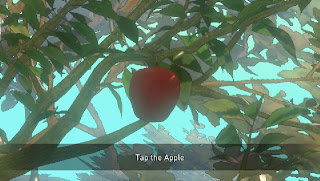Bioshock 2
Being a Big Daddy
| http://gamefiles.alphacoders.com/fanart/original/649-9.jpg |
I was able to play Bioshock 2 for a few hours. I tried the first game a while ago. The horror-ish aspect, minimal resources to manage efficiently, and abilities were cool but the main character being human made the game feel odd to me. How was he expected to survive in such an environment? I like games where there is definitely a challenge and the sense of uncertainty but also the sense of being powerful.
Bioshock 2 has a much different feel from the original. The original set the pace and tone of the magic circle that was the retro world but the gameplay was lacking some mechanics and consistencies. In Bioshock 2 the player is a Big Daddy that is unique and out on his own agenda.
As a Big Daddy you feel powerful but not unstoppable since there are other newer models of Big Daddies and the introduction of Big Sisters. The same mechanic of managing limited resources, such as ammunition, health, energy, and the like is still essential to survival in the second game.
The "magic" ability mechanic feels much less tacked on in this game and more essential. It is also more consistent with your character wince you are clearly a person who has been through a lot of experimentation and experiences in this crazy undersea world. You can increase the power of abilities, health, hacking skills, and other traits through adopting little sisters from other Big Daddies that you defeat. While the challenge of fighting them can be hard and use up a lot of valuable resources, the coherent reward is always worth a successful fight with another Big Daddy.
Little Sisters can be harvested for a set amount of ADAM to upgrade your abilities right when you kill their companion Daddy or you can adopt it and have it harvest more ADAM. This is one of the many decision trees within the game that make the outcome of the game uncertain the the challenge vary. After choosing to save a sister and harvest more ADAM you will have to fight off waves of Splicers (type of drug user in Bioshock world) and any other enemy that wanders by. After collecting more ADAM from two bodies you again have a choice: Save the little sister or harvest her for even more ADAM? I have not played enough to know the reward or punishment for saving little sisters but the extra ADAM is very handy so it should be something significant if the player sacrifices such an oppertunity.
Other decisions in the game are attached to the plot. Like deciding to let someone live or die that has been hindering your progress and trying to kill you for the beginning of the game. At first saving someone may seem almost meaningless but later they may be grateful and in such a tight space underwater, connections are good to have. Other decisions are more minor, such as deciding to hack a camera to use for your own defense or just destroy it and save the hacking dart since it is a valuable resource.
| http://www.slashgamer.com/wp-content/uploads/2009/08/2bigsister2.jpg (Big Sisters) |
The introduction of the new enemies known as Big Sisters is a very cool development for the series. They are much faster than Daddies and have a similar aesthetic. They are just as irritating to fight but in a different way. I used a similar amount of resources fighting a Big Sister as I did a Big Daddy because I missed my shots too often where as the Daddy would take more damage.
The retro Steampunk-esque world is very intriguing. I am excited to play more. The controls are relatively simple and intuitive and the item management is straightforward, which is very good for a game where resources are scarce and very useful. I am glad this game universe has expanded to things like Bioshock Infinite and will explore more Bioshock soon.












































